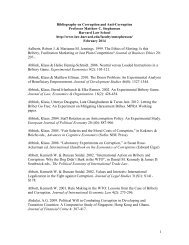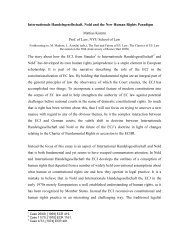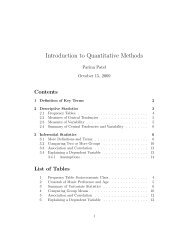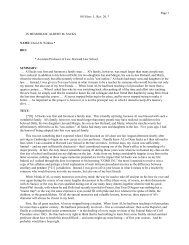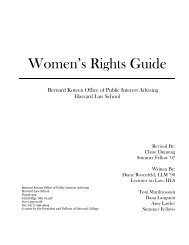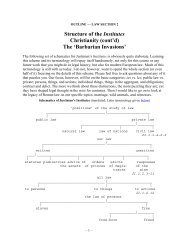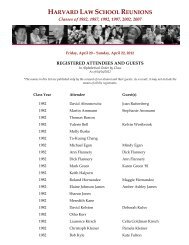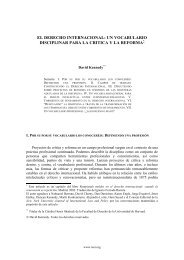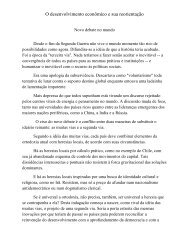CREATING A TRUE ARMY OF ONE - Harvard Law School
CREATING A TRUE ARMY OF ONE - Harvard Law School
CREATING A TRUE ARMY OF ONE - Harvard Law School
You also want an ePaper? Increase the reach of your titles
YUMPU automatically turns print PDFs into web optimized ePapers that Google loves.
2007] Proposals To Combat Sexual Harassment in the Army 165<br />
Army and conducted “written surveys and focus groups [of] trainees, drill<br />
sergeants, and instructors.” 106 Although the Panel found that the majority<br />
of drill sergeants and instructors perform their duties honorably, there<br />
was still cause for concern. 107 The Panel concluded that drill sergeants are<br />
inadequately trained to handle sexual harassment issues. 108 As such, “[s]oldierization<br />
in IET tolerates sexualized behaviors that are inconsistent with<br />
instilling respect as an Army core value.” 109 As the Panel’s data indicates, 110<br />
“trainees in AIT reported experiencing higher rates of sexual harassment<br />
and inappropriate behavior than trainees in either BCT or OSUT.” 111 In<br />
fact, the rates of sexual harassment were found to be higher amongst female<br />
trainees in AIT than active duty female soldiers. 112<br />
b. The Federal Advisory Committee Report on Gender<br />
Integrated Training<br />
Six months after the Senior Review Panel published its report and<br />
one year after the public disclosure of abuse at Aberdeen, the Federal Advisory<br />
Committee chaired by former Sen. Kassebaum-Baker issued its report.<br />
113 The Advisory Committee issued eight broad recommendations,<br />
including reforming recruiting policy, 114 training of cadre, 115 and reinvigorating<br />
basic training 116 (toughening basic training requirements). 117 Nonetheless,<br />
the report is unclear as to how any of these recommendations serve<br />
to combat sexual harassment. The Advisory Committee’s magnum opus<br />
was the recommendation that male and female recruits be segregated during<br />
BCT. 118<br />
106 Id. at 79.<br />
107 See, e.g., id. at 80.<br />
108 Id. at 85.<br />
109 Id. at 80.<br />
110 Id. at 81.<br />
111 Id. at 80.<br />
112 Id. Of the one in three women who claimed to be sexually harassed during AIT,<br />
twenty-seven percent said their drill sergeant was the source of sexual harassment. Id. at 82.<br />
113 The twenty-ªve-page report resulted from Advisory Committee members visiting<br />
seventeen military sites and speaking to over 1000 recruits, 500 instructors, and 300 ªrstterm<br />
service members between June 27, 1997 and December 16, 1997. Advisory Report,<br />
supra note 62, at Executive Summary.<br />
114 Id. at Recommendations: Recruiting Policy (“Decrease emphasis on monetary incentives<br />
in advertising and public relations campaigns and emphasize more motivational<br />
themes of challenge and patriotism.”).<br />
115 Id. at Recommendations: Training Cadre (“Increase the number of training cadre.”).<br />
116 Id. at Recommendations: Basic Training Requirements (“Toughen basic training requirements,<br />
and enforce consistent standards for male and female recruits.”).<br />
117 Id. at Executive Summary.<br />
118 See, e.g., Gender-Integrated Training, Subcomm. on Pers., Comm. on Armed Servs.,<br />
105th Cong. (1997) (statement of Nancy Duff Campbell, Co-President, National Women’s<br />
<strong>Law</strong> Center) (Jun. 5, 1997) (noting that “[t]he Air Force integrated basic training in 1976<br />
. . . . The Navy integrated basic training in 1993 and in 1994 the Army followed suit. [T]he<br />
Marine Corps remains gender segregated in basic training . . . .”).



